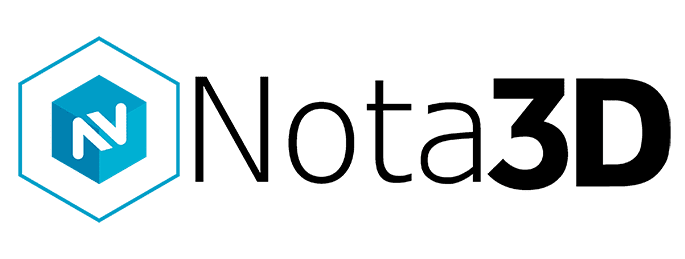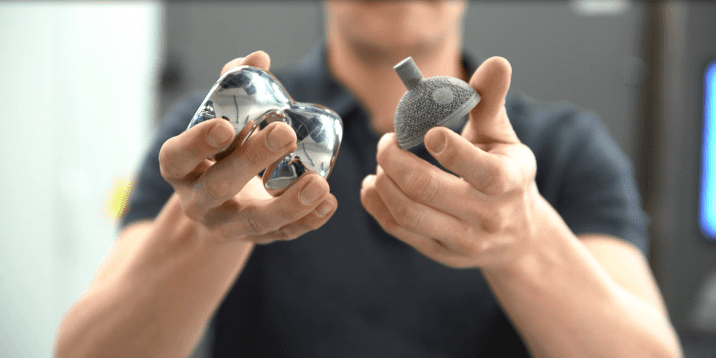Examining the Uses and Advantages of Using Metal in 3D Printing
Metal can be used for 3D printing through a process called metal additive manufacturing. This innovative technique involves the layer-by-layer deposition of metal powder or wire, which is then selectively melted and fused together using lasers or electron beams. The process begins with a digital design that is sliced into layers, and each layer is sequentially built upon a build plate to create a three-dimensional object.
Metal 3D printing offers several advantages, including the ability to create complex geometries, lightweight structures, and highly customized parts. It enables the production of functional metal components with high precision, strength, and durability. Various metals and metal alloys, such as titanium, stainless steel, aluminum, and nickel alloys, can be used for 3D printing, providing versatility and compatibility with different applications across industries ranging from aerospace and automotive to healthcare and consumer goods. Metal 3D printing unlocks new possibilities in design, manufacturing, and rapid prototyping, offering enhanced efficiency, reduced material waste, and increased design freedom. Let’s take a closer look at some of the most common uses for metal 3D printing, and the types of metals that are frequently used.
What Can Be 3D Printed Using Metal?
3D printing with metal allows for the creation of complex, customized, and functional metal parts that were previously challenging to produce using traditional manufacturing methods. Some of the commonly 3D printed metal objects include:
- Prototypes and Industrial Parts – 3D printing with metals enables the production of prototypes and functional parts for industries such as aerospace, automotive, and engineering. Components like engine parts, turbine blades, brackets, and complex geometries can be manufactured with ease.
- Jewelry and Fashion Accessories – Precious metals like gold, silver, and titanium can be 3D printed to create intricate jewelry pieces, including rings, pendants, bracelets, and earrings. This technology allows for intricate designs and customization, offering unique and personalized pieces.
- Medical Implants and Prosthetics – Metal 3D printing has revolutionized the medical field by enabling the production of customized implants and prosthetics. Titanium and other biocompatible metals are used to create patient-specific implants, such as cranial plates, hip and knee replacements, and dental implants, improving patient outcomes.
- Tooling and Manufacturing Fixtures – Metal 3D printing is utilized to produce complex tooling and manufacturing fixtures, which enhance efficiency and reduce lead times in production processes. These fixtures can be tailored to specific requirements and offer advantages in terms of weight reduction and design flexibility.
- Art and Sculptures – Artists and sculptors embrace metal 3D printing to bring their creative visions to life. The technology allows for the creation of intricate and detailed metal sculptures, art installations, and decorative objects that were previously challenging to produce using traditional methods.
- Consumer Goods and Electronics – Metal 3D printing is also utilized to manufacture consumer goods and electronics. Products like custom smartphone cases, high-end audio equipment, watches, and high-performance bicycle frames are some examples where metal additive manufacturing is used.
It’s important to note that the choice of metal materials for 3D printing varies depending on the application and specific requirements.
What Types of Metal Are Used?
Several types of metals and metal alloys are commonly used in 3D printing with metals, each offering unique properties and characteristics. Some of the most common types of metals used in metal additive manufacturing include:
- Stainless steel is widely utilized in 3D printing due to its corrosion resistance, high strength, and affordability. It finds applications in industries such as automotive, aerospace, and consumer goods.
- Titanium is a lightweight, strong, and biocompatible metal used extensively in the medical and aerospace industries. It is known for its excellent strength-to-weight ratio and resistance to corrosion.
- Aluminum is another lightweight metal commonly used in 3D printing. It offers good strength, thermal conductivity, and is utilized in industries such as aerospace, automotive, and consumer electronics.
- Nickel alloys, such as Inconel and Hastelloy, are known for their exceptional high-temperature resistance and corrosion resistance. They find applications in industries like aerospace, energy, and chemical processing.
- Cobalt-chrome alloys, such as CoCrMo, are commonly used in medical and dental applications due to their biocompatibility and excellent mechanical properties.
- Copper is utilized for its excellent electrical and thermal conductivity. It finds applications in electronics, heat exchangers, and electrical components.
- Precious metals like gold and silver are also used in metal additive manufacturing, particularly in the production of jewelry, decorative objects, and high-end consumer goods.
The specific metal or alloy chosen for 3D printing depends on the desired properties, functional requirements, and intended application of the printed object. Each metal has its own advantages, limitations, and compatibility with different 3D printing technologies. the choice of materials allows for compatibility with various industries and functional demands.
What are the Advantages to Using Metals When 3D Printing?
3D printing with metal allows for the creation of lightweight yet strong structures. Complex internal geometries and lattice structures can be designed to reduce weight without compromising strength, making it suitable for applications where weight reduction is critical, such as aerospace and automotive industries.
Metal 3D printing facilitates on-demand production, allowing businesses to manufacture parts as needed, reducing inventory costs, and enabling just-in-time manufacturing. This flexibility is particularly advantageous for low-volume production, spare parts production, and customized manufacturing.
Metal additive manufacturing allows for high levels of customization and design freedom. Each printed part can be tailored to meet specific requirements, whether it’s the shape, size, or internal features. This flexibility is particularly valuable in industries like aerospace, medical, and automotive, where personalized and patient-specific components are needed. It also enables the creation of complex geometries and intricate designs that are challenging or impossible to achieve with traditional manufacturing methods. This allows for lightweight structures, internal channels, and optimized shapes that can enhance performance and functionality.
Nota3D’s mission is to help companies create the best possible products by equipping them with the right 3D technology and supporting their growth. We want to be known as a trusted partner and that is our focus. We listen first, until we have a deep understanding of your need—then we get into what solutions are available to solve it. That’s why several of the nation’s top companies come to us to find the right tools for the job. We’ve worked with everyone from garage inventors to the largest medical device companies in the world and the list keeps growing. We test every product ourselves. If it doesn’t meet our rigorous standards, we don’t sell it. To find out more about how we can help, contact us today.

